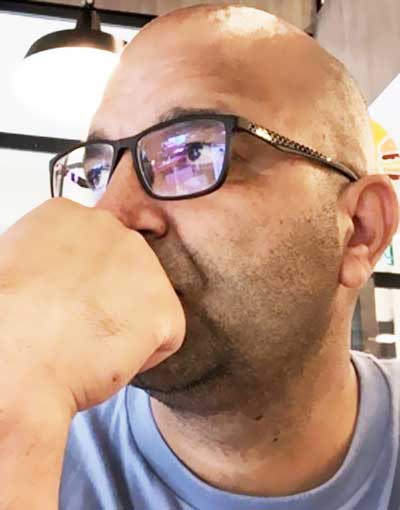As I settled into my new residence in Cinisello Balsamo after relocating from Milan, I was struck by the contrasts and similarities between the two municipalities. Both places face the quintessential challenges of urban living, albeit in different magnitudes and contexts. Milan, with its cosmopolitan flair and bustling streets, often feels like the heartbeat of Italy’s economic and cultural life. In contrast, Cinisello Balsamo, a quieter suburb, offers a different perspective on urban challenges and the role of technology in addressing them.
The shift from Milan’s vibrant center to the more residential and industrial landscape of Cinisello Balsamo has provided me with a unique lens through which to examine the urban issues we face today. As someone deeply invested in urban development and technology, this move has offered new insights into how different municipalities tackle similar problems, and the distinct ways technology is both solving and complicating these issues.
Traffic and Transportation: In Milan, traffic congestion is a notorious issue. The city’s narrow, ancient streets struggle to accommodate the sheer volume of vehicles, leading to frequent gridlocks and long commutes. As a former resident, I vividly remember the frustration of inching through traffic, surrounded by honking cars and impatient drivers. The municipality has implemented various measures to combat congestion, such as limited traffic zones (ZTL) and the introduction of bike-sharing programs, but the problem persists.
Cinisello Balsamo, while not as congested as Milan, faces its own transportation challenges. The town serves as a conduit for traffic flowing in and out of Milan, leading to busy roads and periodic traffic jams. However, the scale is different, and the solutions must be tailored accordingly. Here, the emphasis is on improving public transportation links to Milan and enhancing local road infrastructure.
Technology offers potential solutions for both municipalities. In Milan, Intelligent Transportation Systems (ITS) are being deployed to manage traffic flow more effectively. These systems use data from sensors and cameras to optimize traffic lights and provide real-time traffic updates to drivers. Autonomous vehicles (AVs), though still in their infancy, promise to reduce accidents and improve traffic efficiency.
In Cinisello Balsamo, there is a strong focus on integrating public transportation with Milan’s extensive network. The extension of metro lines and the development of park-and-ride facilities are crucial steps in this direction. However, these projects require significant investment and coordination between the municipalities. As I navigate the streets of Cinisello Balsamo, I am reminded of the importance of a holistic approach to transportation, one that combines technology with infrastructure development and urban planning.
Environmental Sustainability: Air pollution is a significant concern in Milan, exacerbated by the high volume of traffic and industrial activities. The city has made strides in promoting green transportation options, such as electric buses and expanded cycling lanes, but the battle against smog and pollution is far from over. I often recall days when the air quality was so poor that a haze hung over the city, a visible reminder of the environmental challenges we face.
Cinisello Balsamo, with its more suburban character, enjoys relatively better air quality. However, it is not immune to pollution, particularly from nearby industrial zones. The town has been proactive in promoting green spaces and encouraging the use of renewable energy, but more needs to be done to ensure long-term sustainability.
The transition to electric vehicles (EVs) is a promising development for both municipalities. In Milan, the availability of EV charging stations is increasing, and incentives are being offered to encourage their adoption. Cinisello Balsamo can benefit from these initiatives by collaborating with Milan to expand the EV infrastructure, making it easier for residents to switch to cleaner vehicles.
Renewable energy is another area where technology can make a significant impact. Solar panels and wind turbines are becoming more common, but the challenge lies in integrating these intermittent energy sources into the urban grid. Advanced energy storage solutions and smart grid technologies are essential to ensure a stable and reliable energy supply. As I look around my new neighborhood, I see the potential for these technologies to transform our approach to energy and sustainability.
Social Inequality and Digital Divide: One of the starkest differences I’ve noticed between Milan and Cinisello Balsamo is the level of social inequality. In Milan, the disparity between affluent neighborhoods and poorer areas is pronounced. Luxurious apartments and high-end shops coexist with underfunded schools and dilapidated housing. The digital divide is also evident, with marginalized communities lacking access to essential digital resources.
Cinisello Balsamo, while more homogeneous still faces issues of inequality, particularly in access to technology and digital services. As the world becomes increasingly digital, the importance of bridging the digital divide, cannot be overstated. Access to affordable internet, computers, and digital literacy programs is crucial for ensuring that all residents can participate in the modern economy and society.
Both municipalities are taking steps to address these issues. Milan has launched various initiatives to improve digital inclusion, such as free public Wi-Fi in key areas and digital literacy programs. Cinisello Balsamo can learn from these efforts and implement similar programs tailored to its specific needs. Ensuring equitable access to technology requires collaboration between governments, businesses, and community organizations.
As I interact with my new neighbors in Cinisello Balsamo, I see a strong sense of community and a desire to improve. Engaging residents in the planning and implementation of digital inclusion initiatives is essential. By fostering a sense of ownership and participation, we can create more resilient and inclusive urban environments.
Privacy and Security Concerns: The increasing use of technology in urban areas brings with it significant privacy and security concerns. In Milan, surveillance cameras are ubiquitous, monitoring public spaces and collecting vast amounts of data. While these systems enhance security and help manage urban services, they also raise questions about privacy and data protection. I often felt uneasy about the extent of surveillance and the potential misuse of personal information.
Cinisello Balsamo is also adopting smart city technologies, but on a smaller scale. The challenge here is to balance the benefits of these technologies with the need to protect residents’ privacy. Ensuring that data is collected transparently and used responsibly is crucial. Robust regulatory frameworks and clear policies on data usage are essential to build trust and ensure that technological advancements benefit everyone.
Cybersecurity is another critical issue. As cities become more connected, they also become more vulnerable to cyberattacks. Protecting the digital infrastructure of our municipalities requires ongoing investment in cybersecurity measures and continuous vigilance. This is a shared responsibility between local governments, technology providers, and residents.
Community and Governance: One of the most important lessons I’ve learned from my move is the role of community and governance in addressing urban challenges. In Milan, the complexity and scale of the city often mean that solutions are top-down with decisions made by a central authority. While this can be effective, it sometimes overlooks the unique needs and insights of local communities.
In Cinisello Balsamo, the smaller scale of the municipality allows for a more participatory approach. Residents are more directly involved in the decision-making process, and local government is more accessible. This creates opportunities for innovative solutions that are tailored to the specific needs of the community.
For example, the town has initiated several community-driven projects aimed at improving public spaces and enhancing local services. These projects leverage the knowledge and enthusiasm of residents, resulting in solutions that are both effective and well-supported. As I participate in these initiatives, I see firsthand the power of community engagement and the importance of inclusive governance.
Conclusion: A Shared Journey: My relocation from Milan to Cinisello Balsamo has given me a deeper understanding of the urban challenges we face and the role of technology in addressing them. Both municipalities, despite their differences, share common issues such as traffic congestion, environmental sustainability, social inequality, and the need for effective governance.
Technology offers powerful tools to tackle these challenges, but it is not a panacea. The successful integration of technology requires careful planning, investment, and a commitment to inclusivity and transparency. It also requires a collaborative approach that engages residents and considers their unique needs and perspectives.
As I navigate my new life in Cinisello Balsamo, I am filled with optimism about the future of our urban environments. By learning from each other and working together, we can create cities that are not only smart but also sustainable, equitable, and vibrant places for all their inhabitants.
Home Views & Opinions From Milan to Cinisello Balsamo: Navigating urban challenges and technological hurdles
Sign in
Welcome! Log into your account
Forgot your password? Get help
Password recovery
Recover your password
A password will be e-mailed to you.





